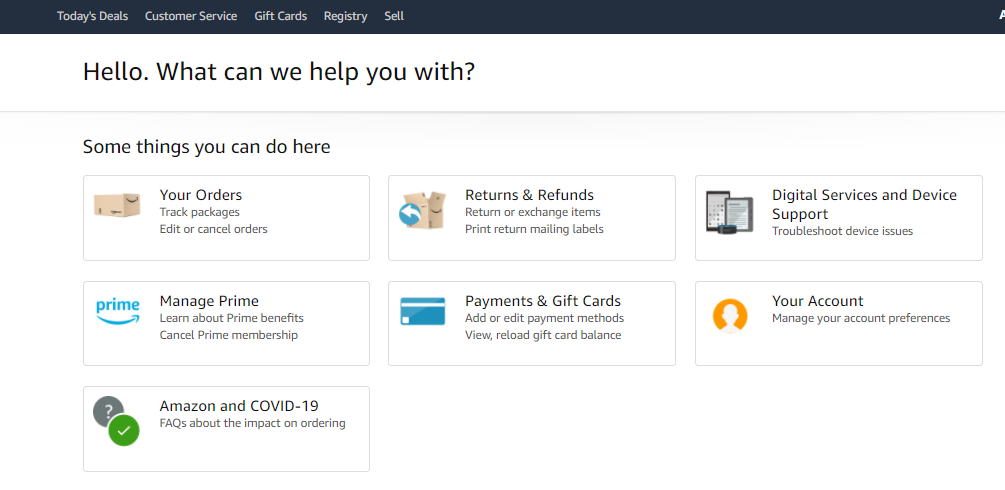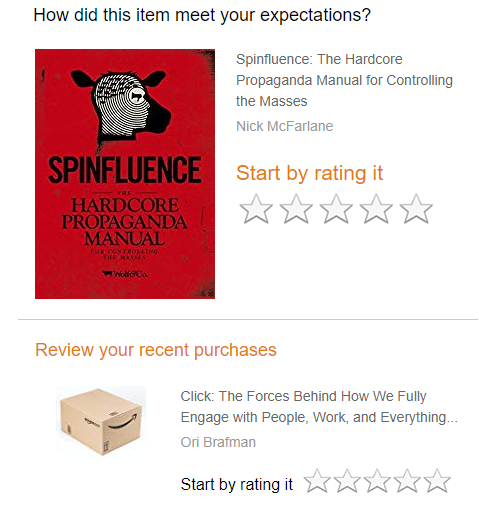Each month, more than 197 million people around the world visit Amazon.com. If it were a country, Amazon would be among the ten most populous world’s places.
In 2019, the online retail giant accounted for 13.7% of the global market share. In the US, it accounts for over 50% of the local ecommerce market.
So, what is the secret of Amazon’s success? The answer is simple – Amazon has built its brand culture on the foundation of innovation and user-centricity. In this article, you will learn how to achieve the “Amazon experience” when marketing to B2B customers.
Amazon has Built its Brand on Exceptional Customer Support
In the B2B landscape, closing a deal is not enough. Your goal is to provide exceptional user experiences and inspire customer loyalty.
One of the most significant aspects of your customer experience strategy is the quality of your customer service. B2B customers appreciate transparency, clarity, and efficacy. When communicating with brands, they want them to provide immediate and relevant feedback.
Listen to your customers
Amazon values the power of customer feedback. Jeff Bezos believes that everyone has to be able to work in the call center. Every year, thousands of Amazon managers attend a two-day call center training program. Amazon is oriented towards listening to its customers. Its philosophy is all about understanding customer needs, problems, expectations, and frustrations.
Simply put, your call center is the gold mine of customer information. Every problem, frustration, or success your customer faces is an opportunity for you to improve your product.
To improve the efficacy of their call center, many companies decide to make a switch from on-premise phone systems to online phone services. Leading business VoIP vendors offer call recording features, while some can even measure customer sentiment and customer experience.
In other words, the tool will record and analyze customer calls for you, while your agents can focus on listening to customers and providing personalized feedback.
Provide customer service across multiple channels
Amazon understands the importance of addressing customer inquiries in real-time and across different digital channels. They offer exceptional customer service via their call center, live chat, and email. Above all, their customer support agents are available 24/7, meaning their customers are seldom put on hold.

If adopting the Follow The Sun customer service model and scheduling customer service shifts is too complicated or expensive for you, you can always consider using an AI chatbot on your website. It will provide fast and real-time customer support, irrespective of a user’s time zone.
Offer self-service opportunities
Apart from hiring a team of customer support agents, Amazon has also built a detailed knowledge center on its website.
Once you click on the knowledgebase, you can choose the topic you are interested in, such as “Return and Refunds” or “Payment Settings.”

If you already know what kind of information you are looking for, you can also use the search box to find answers faster. Finally, the most popular questions asked by customers are also displayed in the FAQ section below.

Each article in the knowledge base is clear and concise, as well as backed up by relevant screenshots.
Once you read the article, the page will ask you whether it was helpful. If you need more tips, the site will point you to other customer service channels.
Personalization is the Nerve Center of Amazon’s Marketing
To personalize users’ experiences on its website and provide relevant product recommendations, the ecommerce giant uses machine learning algorithms. They monitor customer activities and track a wide array of data, including customer geolocation, previous purchases, products they viewed, etc. Based on this data, Amazon provides each customer with highly individualized content and offers.
Provide targeted website experiences
Amazon’s homepage is never the same. Their AI algorithms are continuously tracking everything you do on the website so they can adjust their content and recommendations.
Once you land on their homepage, you will see sections like “New for you” or “More items to consider,” where they show you the products related to what you previously purchased or viewed.
Similar to internet browsers, Amazon also lets you view and edit your browsing history. In the “Browsing History” section, you can see all items you have viewed on the website. You can turn the browsing history feature on and off.
For each product on the list, you can view “More like this” or remove the product from your browsing history. Below, there is also “Inspired by your browsing history” and “Top subscription apps for you” sections, where you can find more products relevant to you.

In the B2B landscape, where lengthy sales cycles are a common thing, website personalization can give you a massive competitive advantage. It will humanize your B2B brand and build trust with highly demanding corporate buyers, encouraging them to make buying decisions faster.
Customize user accounts
Another example of how much data Amazon collects to provide outstanding user experiences is the “Account” section on their website.
For example, you can see all purchases you made, manage your credit card information, update personal data, build a watchlist/wish list, and provide feedback. Users can even connect their accounts with their social media profiles.
Amazon is Nailing Email Marketing
Remember that B2B sales cycles are longer than B2C ones since you are not dealing with a single customer. Many stakeholders are involved in the buying process. Given that, it is not surprising at all that more than 75% of B2B deals take approximately four months to close.
Each B2B customer has different needs, goals, and expectations. Logically, they expect B2B brands to provide them with relevant solutions to their specific problems. Therefore, sending out generic, one-size-fits-all emails does not resonate with your target audience anymore.
One of the most effective solutions to this problem is creating comprehensive buyer personas and segmenting your email lists. That means you will establish contact clusters based on different factors, including their location, age, gender, previous purchases, browsing history, interests, product views, etc.
With campaign management tools such as ContactPigeon, segmenting email lists is simplified. Offering CRM and ecommerce platform integrations, it allows you to collect customer data across different channels and create 360-degree customer profiles. Most importantly, this tool lets you segment customers in multiple ways, including their geolocation, web behaviors, campaign interactions, or special events (signing up to a list, reaching a rewards milestone, etc.)
Amazon has mastered email segmentation. Every email they send you is based on the data they collected about you, including their:
- Welcome emails
- Shipping emails
- Thank you emails
- Receipt emails
- Invite emails
- Upsell emails
- Review emails
- Browsing emails
- Upsell emails
- Special offer emails
Amazon also teaches you to:
Create CTA that Stands Out
Amazon’s emails consist of a single CTA that is straightforward and clear. For example, if you have recently purchased a book, they will simply ask you to review it.

Send Email Series
What happens when a customer lands on Amazon’s site, adds a product to their shopping cart, and then leave without completing the purchase? Well, Amazon sends them a series of emails, all targeted toward the product they abandoned. Sending an email a few hours after a customer ditched the cart is not enough. By sending a few emails more to remind them of the product, you may motivate them to come back and finalize the purchase.
Design Consistent Templates
Amazon keeps its marketing efforts on brand, irrespective of the channel they use. For example, the email template design is always consistent. Above all, widgets and messaging in its emails resemble ones on Amazon’s website. Marketing consistency evokes brand familiarity, builds trust with customers, and encourages them to purchase faster.
Over to You
Amazon is obsessed with customer experiences and they do not hide it. Hyper-personalization, relevancy, and innovation have been driving the brand for years. By adopting these values and adapting them to your B2B customer experience strategy, you will maximize sales, improve customer satisfaction, and inspire brand loyalty.
I hope these examples from Amazon will help you deliver highly targeted and user-oriented B2B experiences. Tell us, how do you create personalized relationships with customers?
Author Bio:

Raul, editor in chief at Technivorz blog, has a lot to say about innovations in all aspects of digital technology and online marketing. You can reach him on Twitter.




